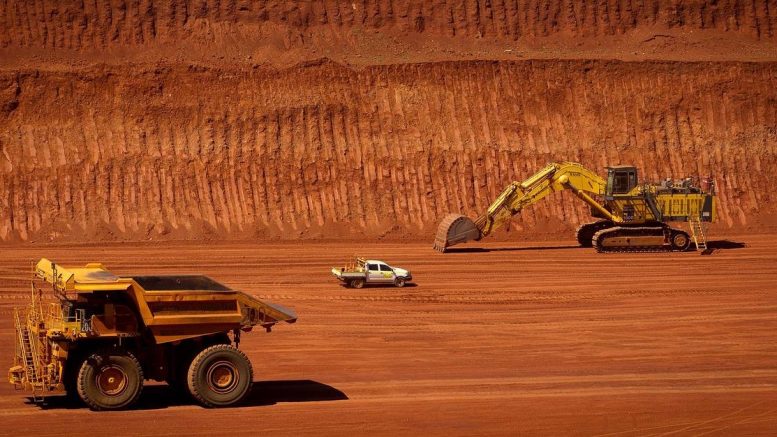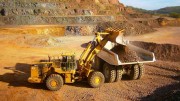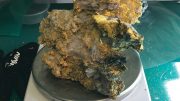While our issue this week is filled with top-10 lists of Canadian mining and its burgeoning junior exploration and development sector, it’s always good to take a step back and look at where the big money in mining is truly made: in iron ore and copper; by British, Australian and Brazilian firms; and from mines in Australia, Brazil and Chile.
Alex De Leon from S&P Global Market Intelligence compiled a list of the “Top-50 most valuable mines” as part of the firm’s Worldwide Mine Production Trends series, which ranks the top-producing mines by the five most valuable mined commodities — gold, copper, iron ore, nickel and zinc (even diamonds and coal don’t make the cut), and counting only the primary mined commodity by nominal production value in 2016.
Iron ore mines account for 20 of the top-50 mines, tied with copper mines. The other 10 mines are divided between gold (five mines), zinc (three) and nickel (two).
The importance of iron ore is even more apparent towards the top of the list, accounting for the top-four mines, and seven of the top-10 mines. Copper’s presence is next heaviest, accounting for nine of the top-20 mines.
De Leon’s most valuable mines list is topped by: Rio Tinto’s Hamerley’s Consolidated iron operations in Australia at US$10.8 billion in 2016; Vale’s Serra Norte iron ore operations in Brazil at US$7.9 billion; BHP Billiton’s Newman iron ore operations in Australia at US$5.9 billion; Fortescue Metals’ Chichester Hub iron ore operations in Australia at US$5.3 billion; and BHP Billiton’s Escondida copper mine in Chile at US$5 billion.
The next five most valuable mines, all in the US$3- to US$4.3-billion range, are: BHP’s Yandi iron ore mine in Australia; Fortescue’s Solomon Hub iron ore operations in Australia; Freeport-McMoRan’s Grasberg copper-gold mine Indonesia; Navoi Mining & Metallurgical Combinat State Co.’s Muruntau gold mine in Uzbekistan (with 2.6 million oz. gold production in 2016); and BHP’s Area C iron ore operations in Australia.
The 50 mines had a cumulative production value of more than US$124 billion last year, with iron ore and copper accounting for US$64 billion (52%) and US$43 billion (35%) of the total. That leaves only a combined US$17 billion (14%) in cumulative production value for the other 10 gold, nickel and zinc mines on the top-50 list.
De Leon found that over 93% of this total iron ore value is attributed to mines in Australia and Brazil, while Chile played an outsized role in copper production in the top-50 list, accounting for 3.3 million tonnes of output in 2016.
S&P notes that while gold was the most valuable mined metal globally in 2016, the individual mines are small compared with those extracting iron ore and copper.
While the U.K.’s Rio Tinto takes top spot on the list as operator, De Leon notes that Brazil’s Vale has the most operations on the top-50 list, with nine operations — seven iron ore mines, one copper mine and one nickel complex — producing a total value of US$21.4 billion in 2016.
Only two mining complexes in Canada make the top 50: Vale’s Ontario nickel division in 34th spot at US$1.6 billion in value; and ArcelorMittal’s Mont Wright iron ore mine in 41st place at US$1.4 billion.
Canadian operators also show up further down the list: Barrick Gold at 26 with the Goldstrike gold mine in Nevada and at 39 with Pueblo Viejo; First Quantum Minerals at 42 with the Kansanshi copper operation in Zambia; Turquoise Hill Resources at 44 with the Oyu Tolgoi copper-gold mine in Mongolia (though Rio Tinto is operator there); and finally, Teck Resources at 49 with the Red Dog zinc mine in Alaska.
Some of the biggest risers on the top-50 list are MMG Ltd.’s Las Bambas copper mine and Freeport’s Cerro Verde copper mine, both in Peru. On the downside were Anglo American’s Los Bronces copper mine in Chile and Turquoise Hill’s Oyu Tolgoi, which saw major declines in head grades in 2016.






Be the first to comment on "Facts ‘n’ Figures: Canadian mines take backseat to world’s iron ore, copper giants"